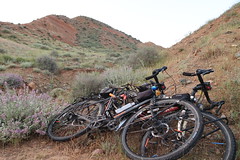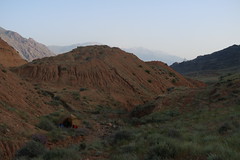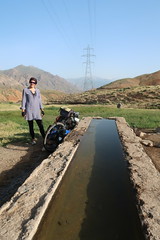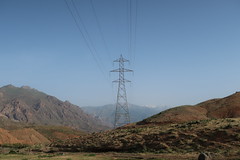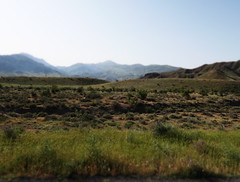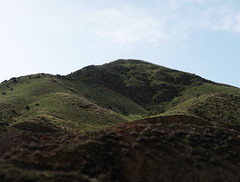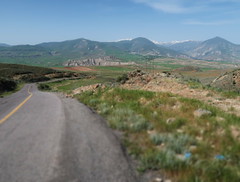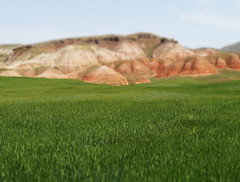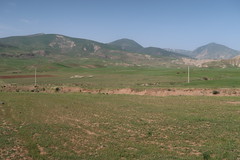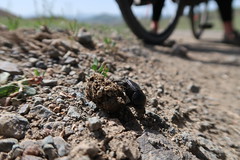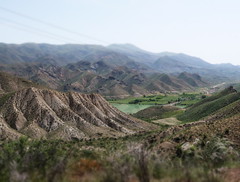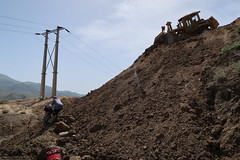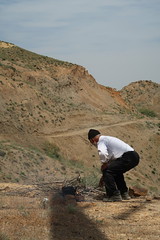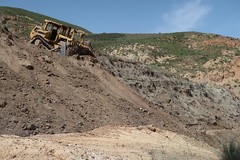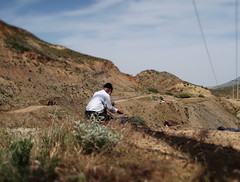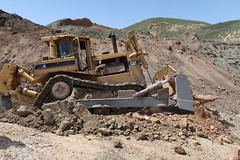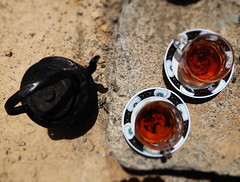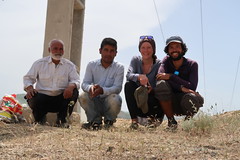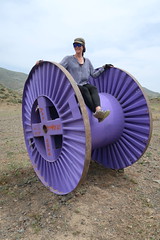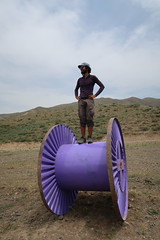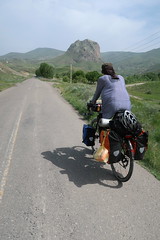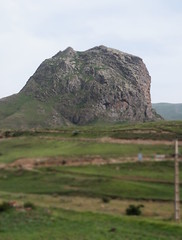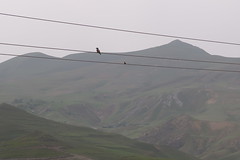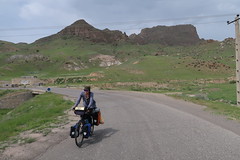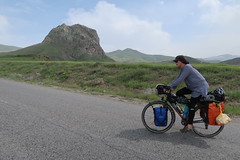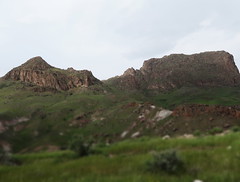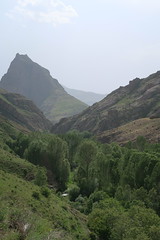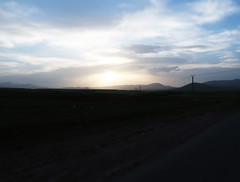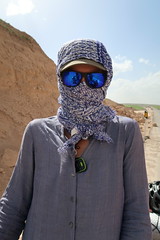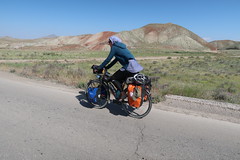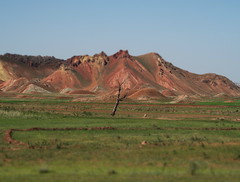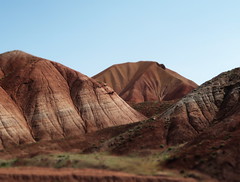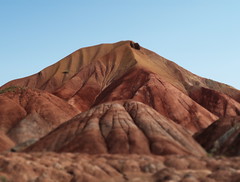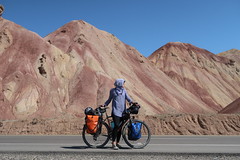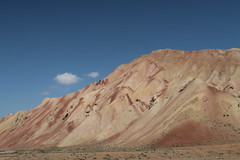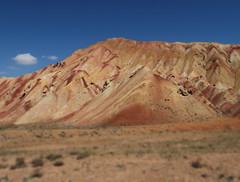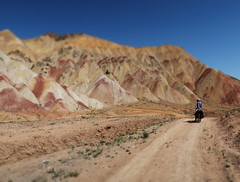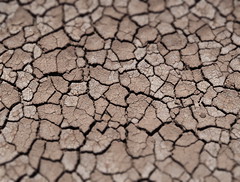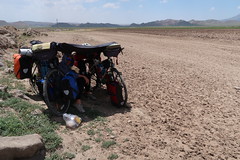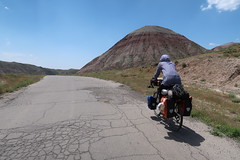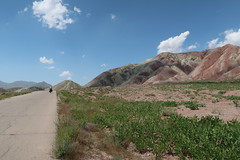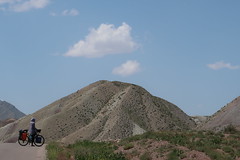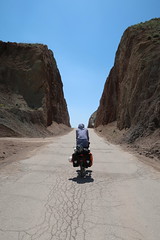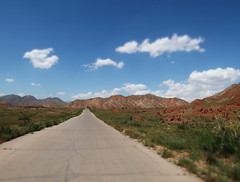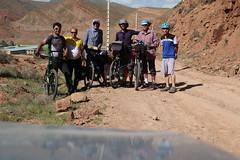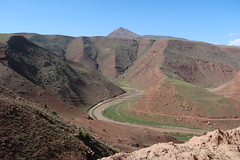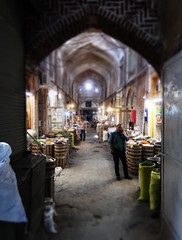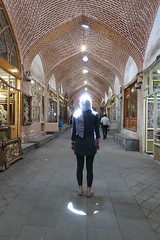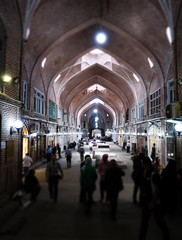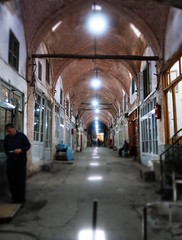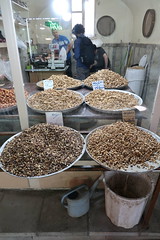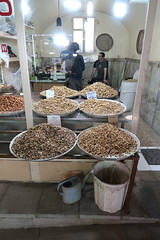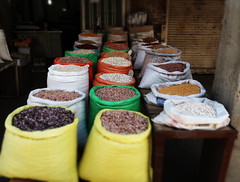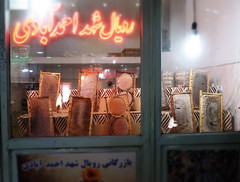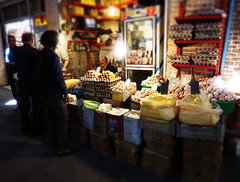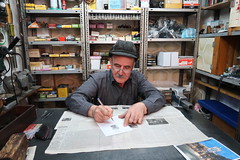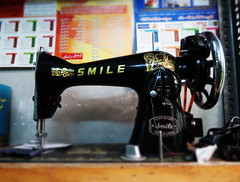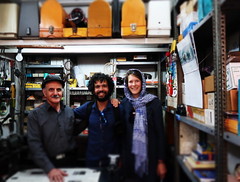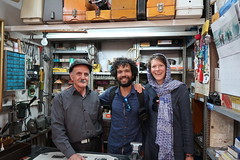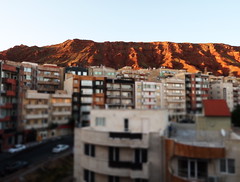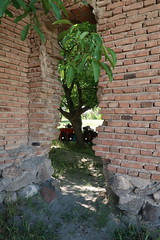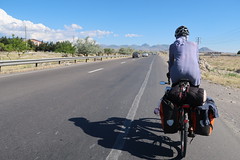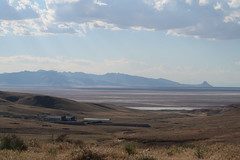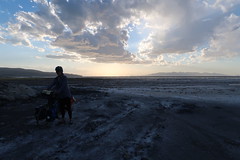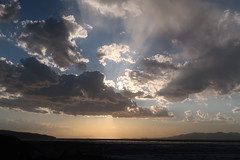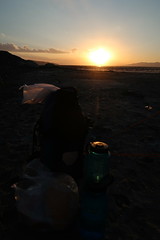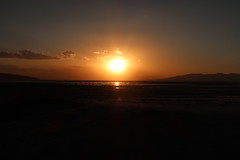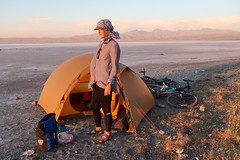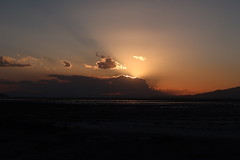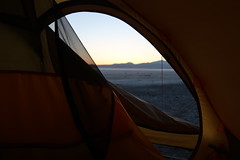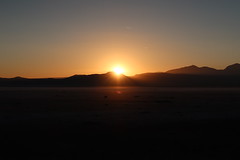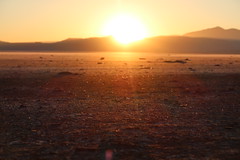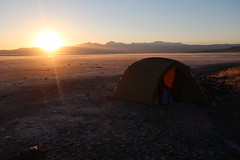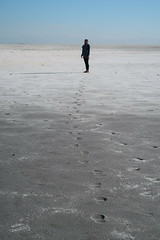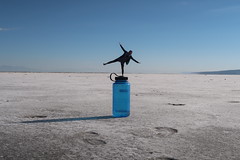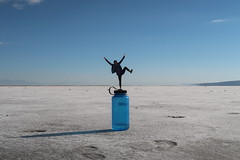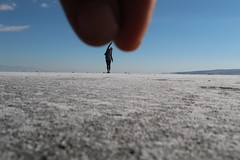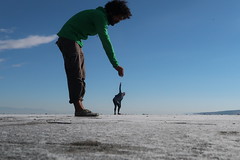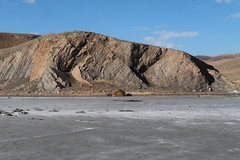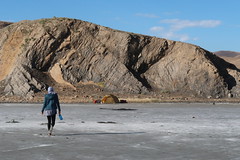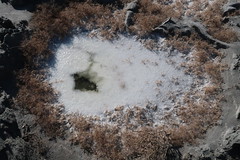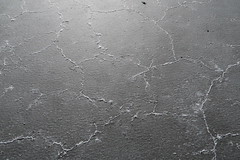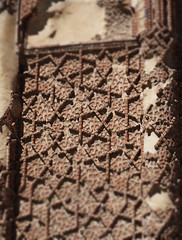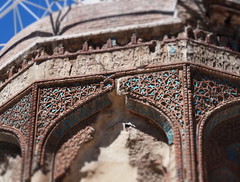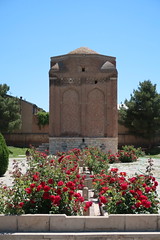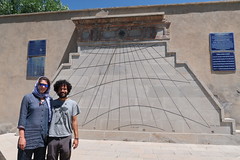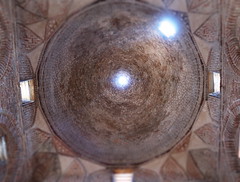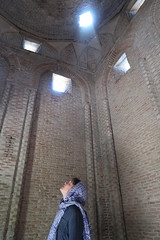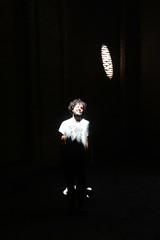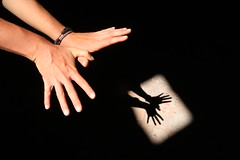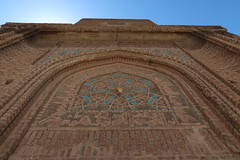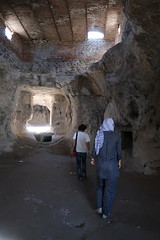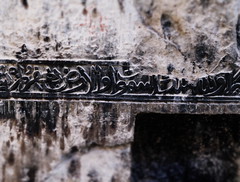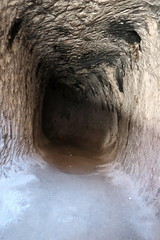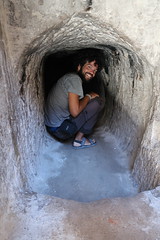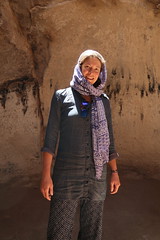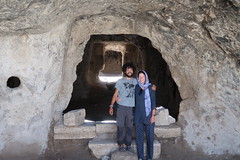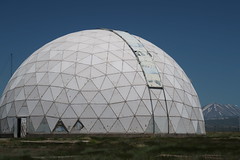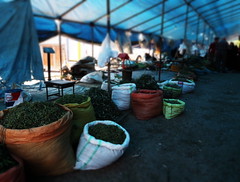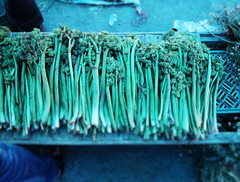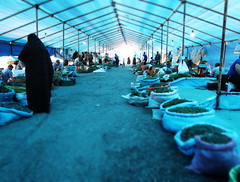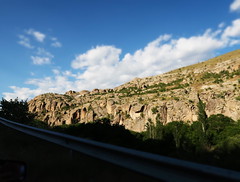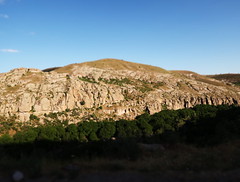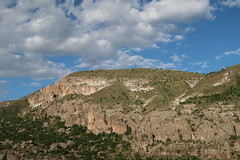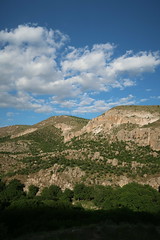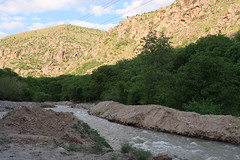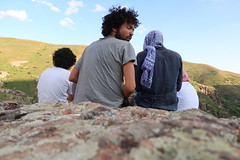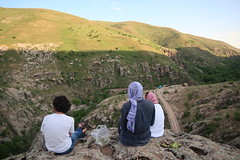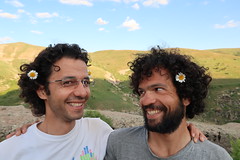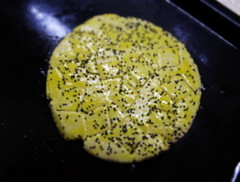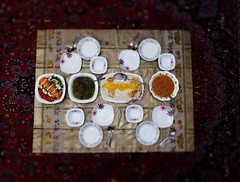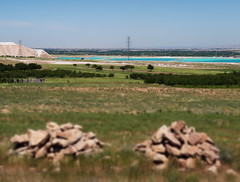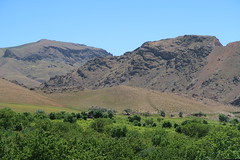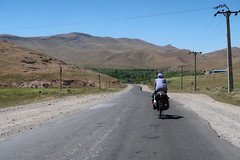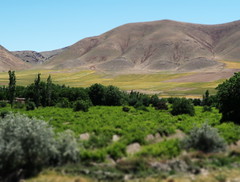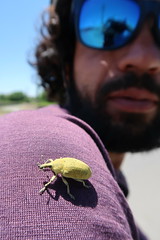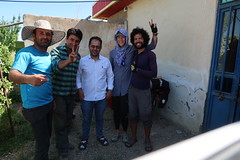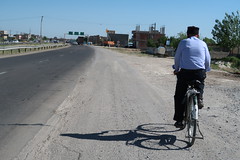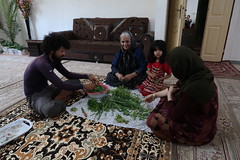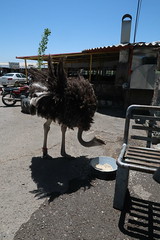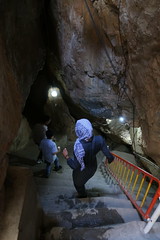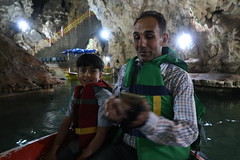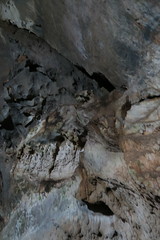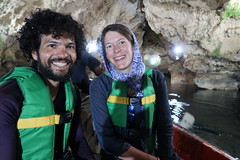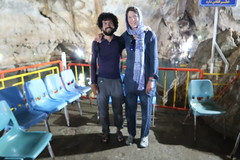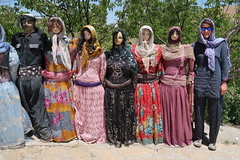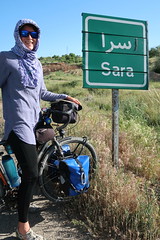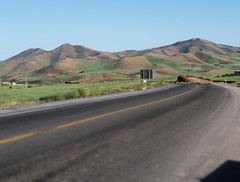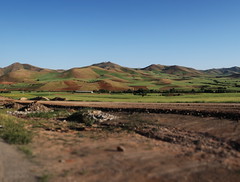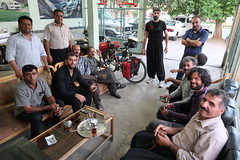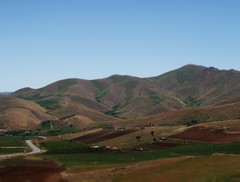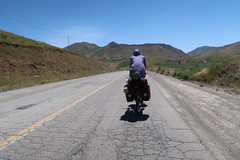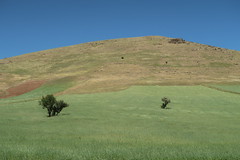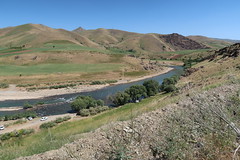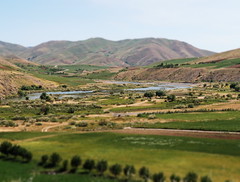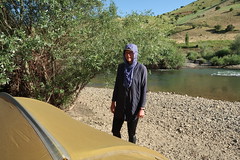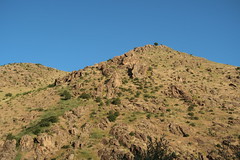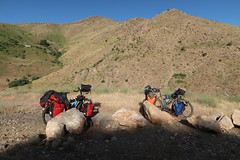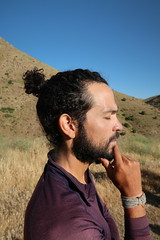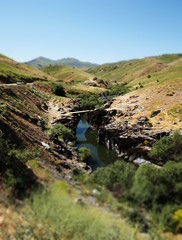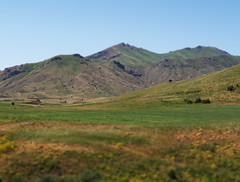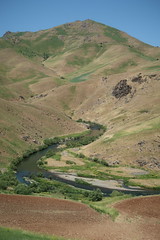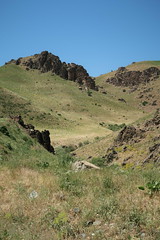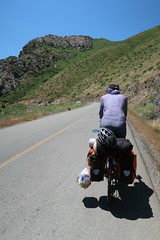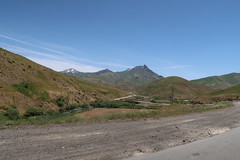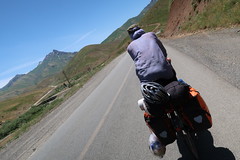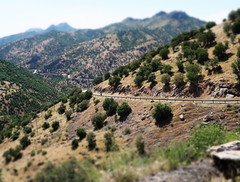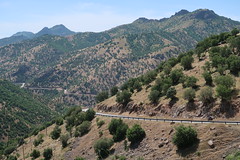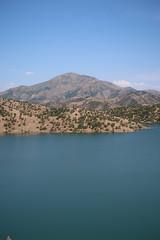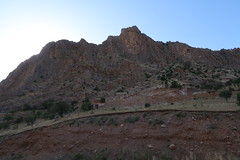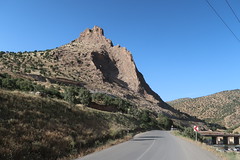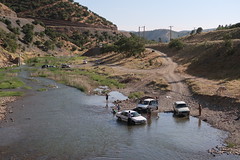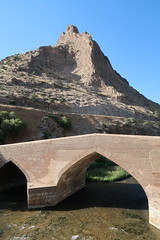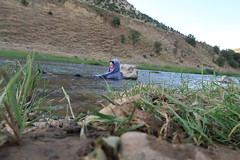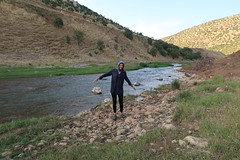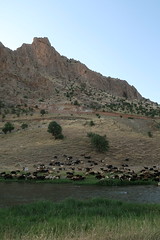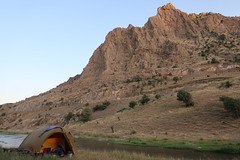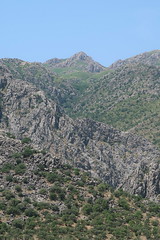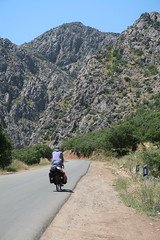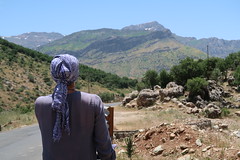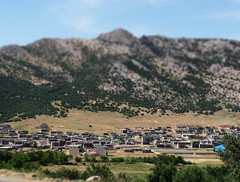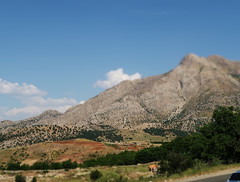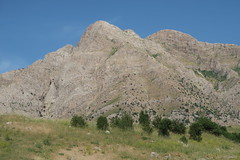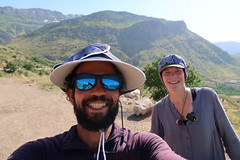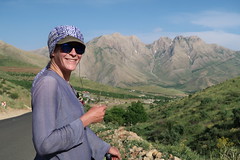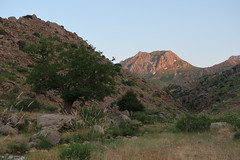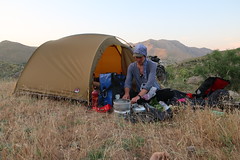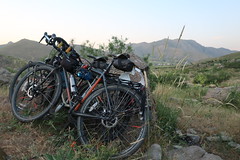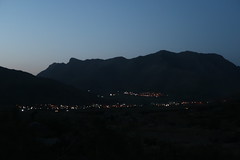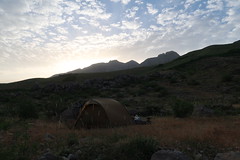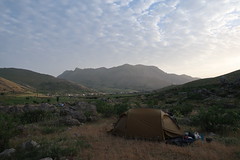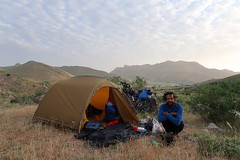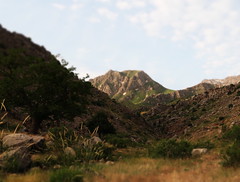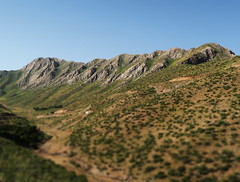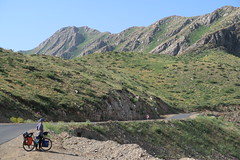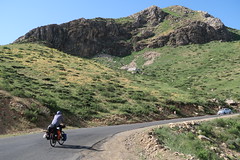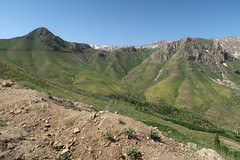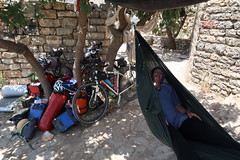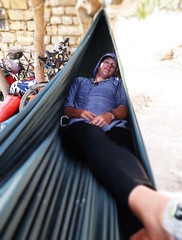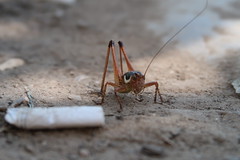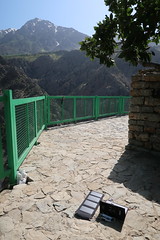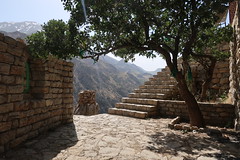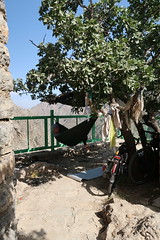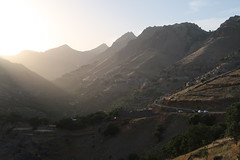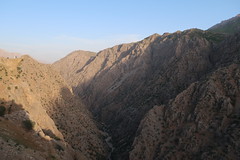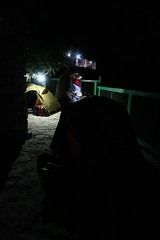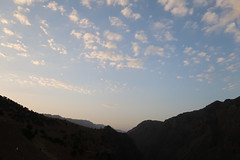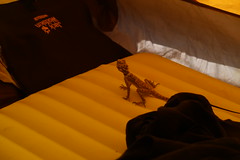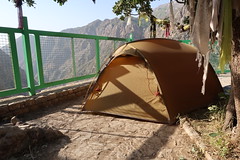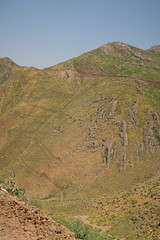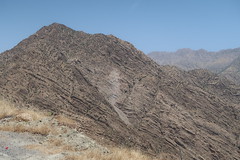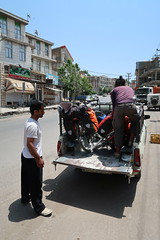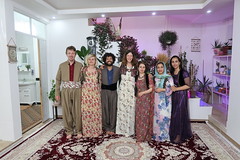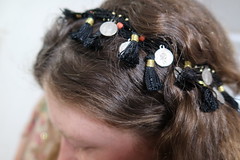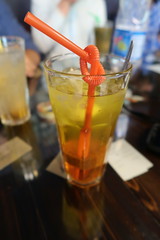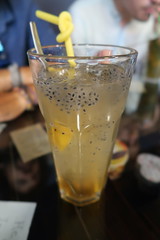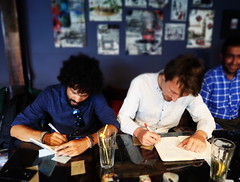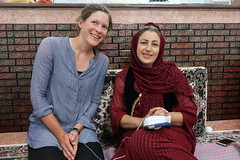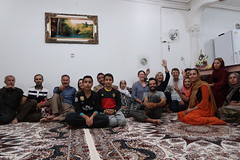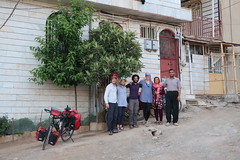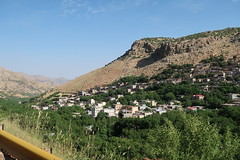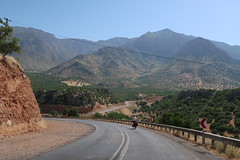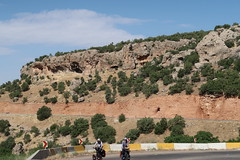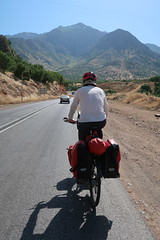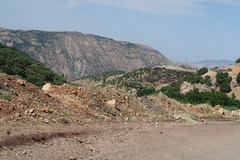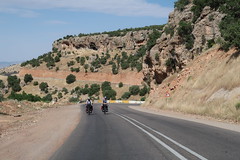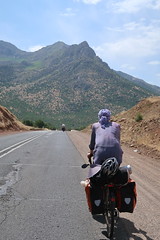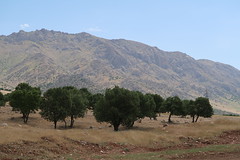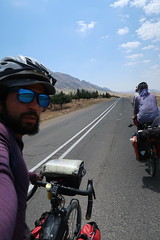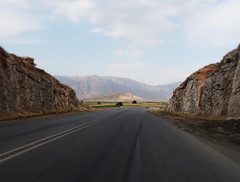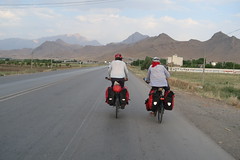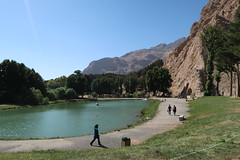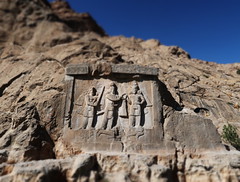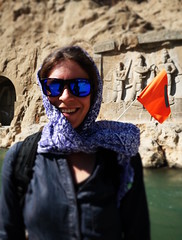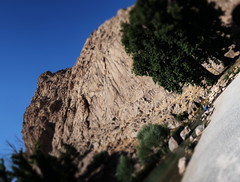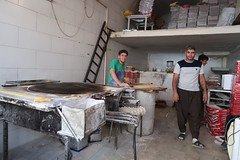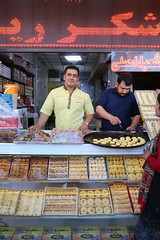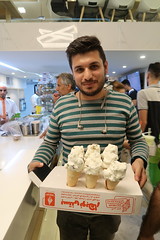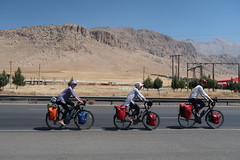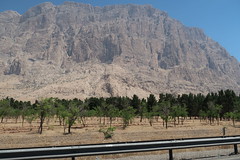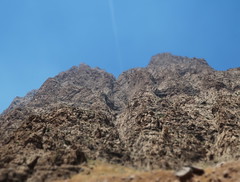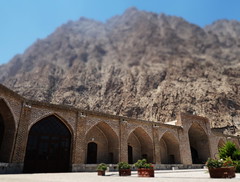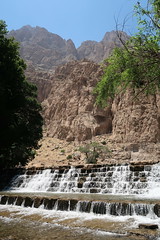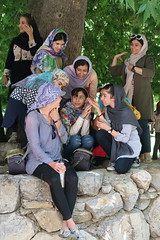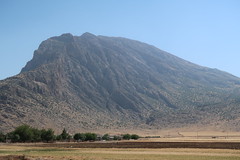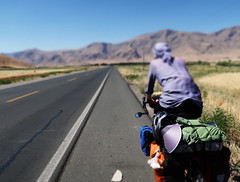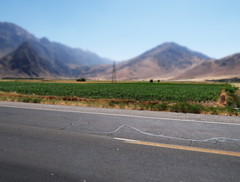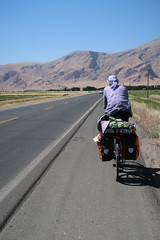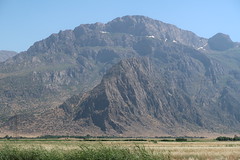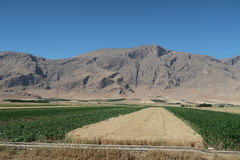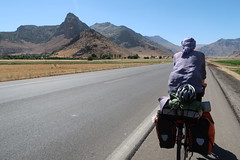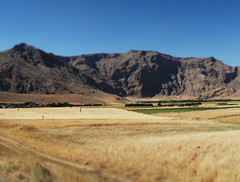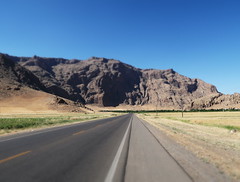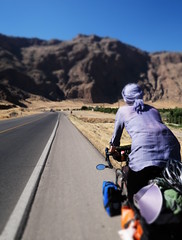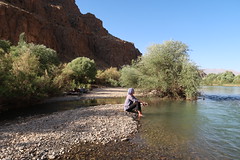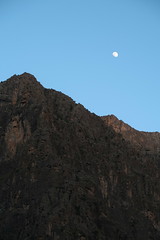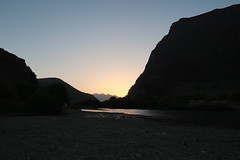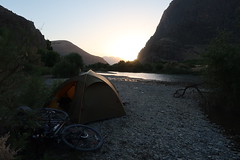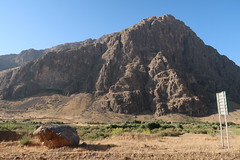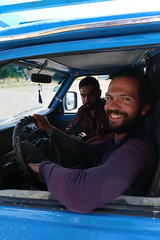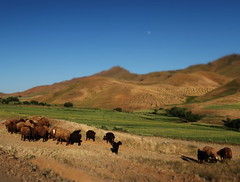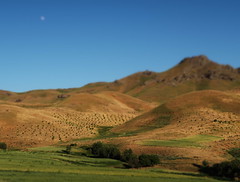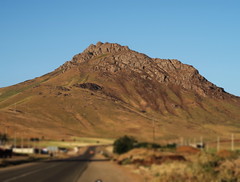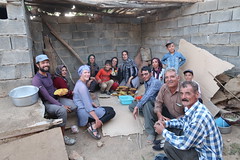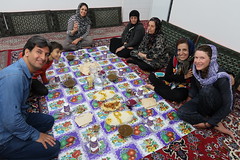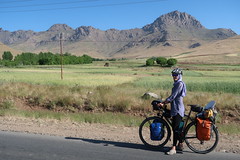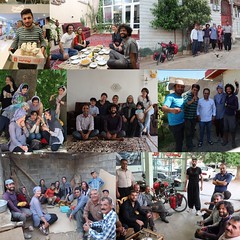It has to be said that we were all a little nervous before crossing the border into Iran. There were so many unknowns: Was my outfit acceptable according to the imposed Islamic Law? Would we be able to eat while on the road? (It was still Ramadan, and during this time it is technically illegal for anyone to eat or drink in public places). Also, I was travelling on my Irish passport, as British citizens like Americans can only visit Iran as part of an organised tour. Would I be found out, not let in or kicked out? And to top it off, Trump was throwing his toys out of his oversized pram and seemed intent on starting a war with Iran in the Persian Gulf. We had heard so many positive tales from others that had cycled through Iran and yet still the prejudiced image of the country, portrayed in the media hung in the back of our minds.
Nevertheless, I in particular was looking forward to leaving Armenia behind us. The border guards were reassuringly kind, welcoming us into their country and turning a blind eye to the final Snickers bar that we and Stefan snaffled in a quiet corner. Our cycling trio parted ways – Stefan catching a ride to Tabriz and us taking the longer, more mountainous route, obviously.
We were soon introduced to the Iranians love of selfies : as we filled our water bottles some one stopped their car, took our photo, showed us the picture of some other cyclists he had captured, and left. Not a word was exchanged, but it left us with bemused smiles on our faces.
The first days cycling in Iran were tough. It was hot, super hot, and mountainous. One day we drank atleast 5l of water each, not crossing a water source to refill our bottles or to cool down in until the early evening. We drank and we drank, but our thirst wasn’t quenched, the water tasting strangely demineralised. Our throats remained scratchy and dry immediately after drinking. We experimented with putting salt in our water – gross. Some wild thyme we found was a mild improvement, making the near tea temperatured water more drinkable. It wasn’t until a few days later that we discovered that a large melon split between two, to be the best cure for these hot days on the road.
It was refreshing to see so many places selling fruits and vegetables after the drought of them in the Caucasus. From the backs of trucks, in shops and street corners there would be melons or strawberries, tomatoes and garlic or onions piled high. A significant improvement from the intermittent, wrinkly and sad looking offerings in Armenia.
In the afternoons, the wind would also become ferocious. Alas, it was never behind us, always to the side or head one. One afternoon, after 1h30 of battling the wind we realised that we had only covered 10km… And we were going downhill! We decided that it wasn’t worth wasting our energy anymore and gave up, making camp in an orchard belonging to a friendly farmer. The next morning, we zoomed down the remaining 30km in just one hour…
On the way, we were treated with views of the beautiful multicoloured mountains of Tabriz. We pedalled around the peaceful valleys with grins on our faces. It felt like we had pedalled into another world.
Our chosen route into Tabriz was naturally an off-road one, in fact a shortcut to try and avoid the busy main roads going into the city. On our way up, we bumped into the first cyclists we had seen in Iran. All male, but friendly nevertheless. Obligatory selfies taken, we set off together up the dirt track towards the city. Chivalrously or out of curiosity, who knows, one of the cyclists offered to switch bikes. Cycle uphill on a heavily loaded touring bike or a carbon framed mountain bike? Erm, yes please!?
In Tabriz we stayed with the super friendly Zahra and Arash. We really appreciated how laid back they were when we were still finding our feet in this new country. Although we had been met by nothing but curiosity, kindness and invitations for çay and selfies in Tabriz, with the high density of people we couldn’t help but feel that we were being observed.
It was obvious we were tourists, there were calls of “hey mister” around every corner of the bazaar and I was forever aware of my headscarf. How did Iranian women keep the scarf on their heads whereas mine always seemed to slide off? I was often caught with the feeling that we had done something wrong…
And to some extent, we had: catching the bus to the bazaar, it took a few minutes for us to realise that the men and women were segregated. I should have been sat at the back of the bus. We decided not to notice and stared out of the window until somebody told us to move. But the conductor didn’t even come to take money for our ticket, let alone ask me to go to the back of the bus.
We soon realised that our concerns about cycling in Iran were completely unnecessary. Every other car seemed to call “welcome to Iran” to us out of the car window, and the other half would offer us tea, ask for a selfie or fill up our water bottles with cool water.
The heat was getting to us, but Pedro’s phone suffered the worst – it died of heat exhaustion on the way out of Tabriz. Atleast we could eat ice-cream. Delicious saffron ice-cream. Even during Ramadan it seemed! We learnt quickly, that the majority of Iranians didn’t keep Ramadan atall, which was quite the relief for us. We’d often see a car full of smiles and waves, ice-creams in hand as they drove past us.
Although we certainly saved on suncream, the compulsory hijab clothing was not functional for summer cycling in Iran. Having a piece of cloth tied round your neck when it’s 35° and you are cycling up a hill only leads to a stroppy Sarah. Thankfully I soon learned to tie the scarf into a turban, freeing my neck to feel a breeze once more… But then I just had twice the amount of material on my head. Soaked with water it atleast provided some respite from the heat, although did gain us some funny looks from passing Iranians as I stuck my head under a road side springs.
Atleast I didn’t have to wear a chador. How many women wore a chador depended on the region we were in. We would often see women holding the fabric together with their teeth as they struggled to gain a free hand to carry shopping or choose fruit. Women would be dressed in black from head to toe, with an extra headscarf and long layers of clothes underneath. How they didn’t overheat, I have no idea. Practice I guess.
Given our love of river swims and the ridiculous temperatures that we were cycling in, the Islamic dress code wasn’t going to stop us going for a dip. Whenever we found ourselves camped next to a river, swims would be conducted fully clothed, killing three birds with one stone : vaguely washing the salt out of our clothes, cooling us down and rinseing off the delightful layer of suncream, salty sweat and dust that we would accumulate throughout a day of cycling.
On top of the weather, Ramadan and the dress code, there was the money to get used to aswell. Last year, 1€ would have given you 50,000 Rials, but the Iranian economy is suffering so much due to the US imposed sanctions, that currently 1€ is equivalent to about 150,000 Rials. As tourists it’s hard not to see this as great, but the more and more people we meet you cannot ignore how much Iranians are suffering as a result. Not only are they subject to the massive inflation of everyday goods, but they are financially trapped in their own country with their weak Rial.
In our first money exchange, we could only get notes of 100,000 Rial. As you can imagine, when exchanging 100€, this results in quite the wadge of notes. We stuffed the notes in atleast 6 different places, hoping that we would remember all the hiding places.
Furthermore all prices are given in Tomam. You might ask yourself, what is Tomam? Tomam is the currency of the street : 1 Tomam is 10 Rials. All prices are quoted in Tomam, so a zero has to be added to know which Rial notes to hand over. However, more often than not you are just told the price is 9, for example… And you are left to work out how many zeros to add to the end depending on whether you are buying some fruit, mobile phone credit or a car.
Oh, and the numbers are in Persian.
Once you’d finally worked out the price and roughly how much you would have to pay, sometimes the market owner might say that you don’t have to pay anything at all. A fine example of tarof. When someone offers you something for free in Iran, it’s best to check three times to make sure the offer is genuine.
There is no doubt that the Iranian people are among the most generous and curious that we have met. Most often they just want to know where we are from. 100% of the time, when Pedro replies with Portugal (meaning orange in Farsi), the inquisitor responds with “Cristiano Ronaldo!!”, looking very happy with themselves and walks off chuckling.
Sometimes the level of conversation expands. Unlike in Turkey, in Iran it is rarely asked but simply assumed that we are married, so next people are concerned about our age. Then given that we are so ancient, where are our children?! Indeed the culture means people get married and have children much earlier than we are familiar with : meeting a 38 year old mother with a 22 year old daughter was not uncommon. It happened to us.
Oh, and they were also concerned about the absence of our socks. Of all things: socks in 40° heat. We were so hot from wearing so many more clothes than we would otherwise cycle in, that there was no way that we were going to wear socks too, no matter how many insects they were worried would bite our feet.
Depending on who was asking the questions, sometimes the curiosity was directed at both of us and sometimes only Pedro. At first I became frustrated if they only shook Pedro’s hand, or only asked Pedro what his job was – er, I had a job and degree too thankyou very much. I soon learnt though, that even more liberal thinking Iranian men struggle to shake hands with a woman, as a sign of respect to the woman’s husband, and so I gracefully accepted a nod of the head as a greeting instead. Being ignored in conversations however, I did not accept and took it as an opportunity to pointedly roll my eyes and ignore them back and get on with whatever I wanted to do.
We cycled from Tabriz and headed south, past a very dried up salt lake (dry from too much damming around the lake and poor water management on part of the government) and towards the Iranian Kurdistan region. People were incredibly kind and welcoming to us : inviting us to stay at their homes for the night, taking us to local caves, feeding us watermelons and simply filling up our water bottles.
We cycled into Kurdistan during Eid, the holidays following Ramadan. The usually quiet roads were packed with cars packed themselves with families, barbecues and picnic blankets. And Iranians are expert picnicers. During the holidays you’ll find people sitting on picnic blankets in any patch of shade they can find, tea brewing, watermelon cut and meat barbecuing quietly in the corner. There are very characteristic tents that every proud Iranian seems to own and use extensively. You’ll see them everywhere: in parks, on the pavement, by rivers (with their cars parked in the river for cleaning), and scattered over a mountainside.
Most of the families we stayed with in Kurdistan seemed to have a real connection to nature. Everyone it seemed, knew lots about the herbs that grew wild in the mountains – where to pick them and their health benefits. If they didn’t have goats or sheep to produce their own milk, they would buy it raw and then every home (well the women in the home) would make their own cheese, yoghurt, butter and doogh (a buttermilk drink made delicious by adding herbs and salt).
Close to the Kurdish mountain village of Uraman Takht, I was plagued by a mystery stomach bug and so we made camp at a viewpoint at the edge of the village that conveniently had shade, running water and toilets. Not a bad place to be sick. Pedro could enjoy the view as I napped in the hammock, proving again its worth as the most essential non-essential kit that we are carrying.
In between conversations with neighbouring picnicing families and mouthfuls of watermelon, two very non-Iranian looking heads peered over the railings. Cyclists! Dries and Manon had cycled from Belgium and had just crossed into the Kurdish region of Iran from the Kurdish region of Iraq!
We spent the evening sharing tales of pedalling past, present and future and went to sleep to the chorus of a barking dog choir. Not the most dulcet tones to send you off into a deep sleep.
My stomach still unhappy, we parted ways in the morning. Manon and Dries pedalling onwards and me returning to the hammock. Fate meant that our paths crossed again however, and after spending a few days together with a family in Paveh our pelaton made a 130km dash to Kermenshah.
In Kermenshah we had a cyclists convention with an fantastic French family of four. Over the past year, Celine and Manuel had cycled with their two girls over 8000km from France to Iran. We shared watermelon and tales of our travels, and were super inspired by their determination, strength and energetic spirit. Screw convention, keep on adventuring.
We probably had more interactions with people in our first weeks in Iran than the whole six months which we cycled through Europe. Not only were people kind, but they were also incredibly open and honest and keen to know our impression of Iran so far. It was clear that public and private life in Iran were two very different things. I’d say that if any conversation reached 15 minutes, by then 90% of the time the topic would turn to the government, how much they disliked the current regime and how much the economy was suffering as a result of the US sanctions.
We got a lot of insight into life in Iran during these conversations,we haven’t been able to fact check all of these, but nevertheless it gives you an idea of how Iranians see their country:
– girls are considered adults from the age of 9, whereas boys not until they are 15
– men can only get a passport after completing a 2 year period of unpaid military service and women only with the permission of their husband or father and presumably only if they have completed their military service
– at the current exchange rate a typical income is just 100$ per month – we met a professor of law at Tehran university who earned the equivalent of 400$ per month and an accountant 250$
– the unemployment rate is incredibly high, more than 60% of those that go to university are unemployed
– and… women are not taken into account in unemployment rates… their job is in the home… Obviously
– women are really valued less then men. Half to be precise. In a court, it would take the word of two women to be counted against the word of one man
– alcohol is made at home or smuggled in through Azerbaijan, or cunningly available in standard 1.5l water bottles
– satellite dishes are forbidden… But everyone has them
– chess, backgammon and polo are all Persian games
– apparently toilets are meant to be at right angles to direction you face when you pray… But, we stayed in a house with two toilets perpendicular to one another, so who knows!
– In chess the bishop is called an elephant and the queen a minister (of course there is no women in this game…)
– many young people like Trump… We have no idea why, but perhaps this shows the extent of the Iranian people’s desperation : Trump, if he got his own way, would bring significant change to Iran… But with it would likely come alot of destruction
– we found a bit too late that traditionally giving a thumbs up was the equivalent of f*ck you… But thankfully with the availability of the internet most people no longer see this as an insult if it comes from a foreigner… Hopefully
– the government blamed the lack of water in the Esfahan river on the women for not wearing their hijab correctly… Nothing to do with their poor water management nationwide
– family is so important for Iranians, that in Persian their are 8 different words for cousin, depending if they are male or female and from your mother or father’s side of the family and the child of your uncle or aunt. Similar applies to grandparents…
– Iranians get updated by the government by text message about all sorts of very important things: from telling them about the end of Ramadan to reminding women that they should wear their headscarf in the car
From Kurdistan we pedalled towards Kermanshah and Hamedan. From the map we were following, we always managed to massively underestimate the sizes of the cities that we ended up cycling to. This was unfortunate as Iranian cities tend to be massively polluted. So polluted that we would often end up feeling slightly nauseous and with stinging eyes as we weaved our way in or out of their chaotic road systems. We experimented with wearing face masks, but found they just ended up making us hyperventilate.
As a result and because time was ticking, we decided to catch a bus into Tehran. Whereas the price of our ticket was fixed, the price of putting the bikes in the luggage hold went purely on haggling, or “arguing with the driver” as the lady selling tickets told us.
Onwards to Tehran for visa shenanigans!

